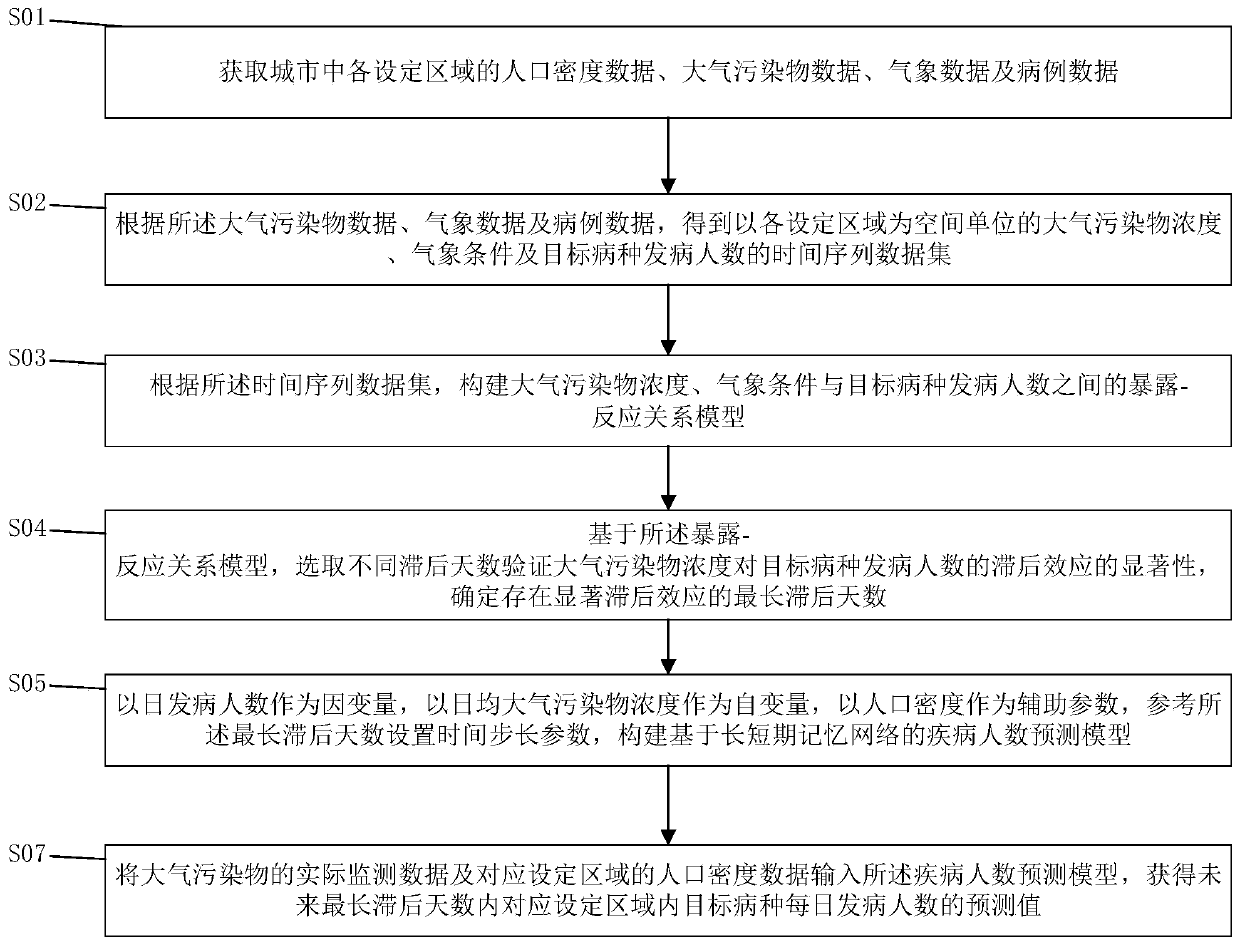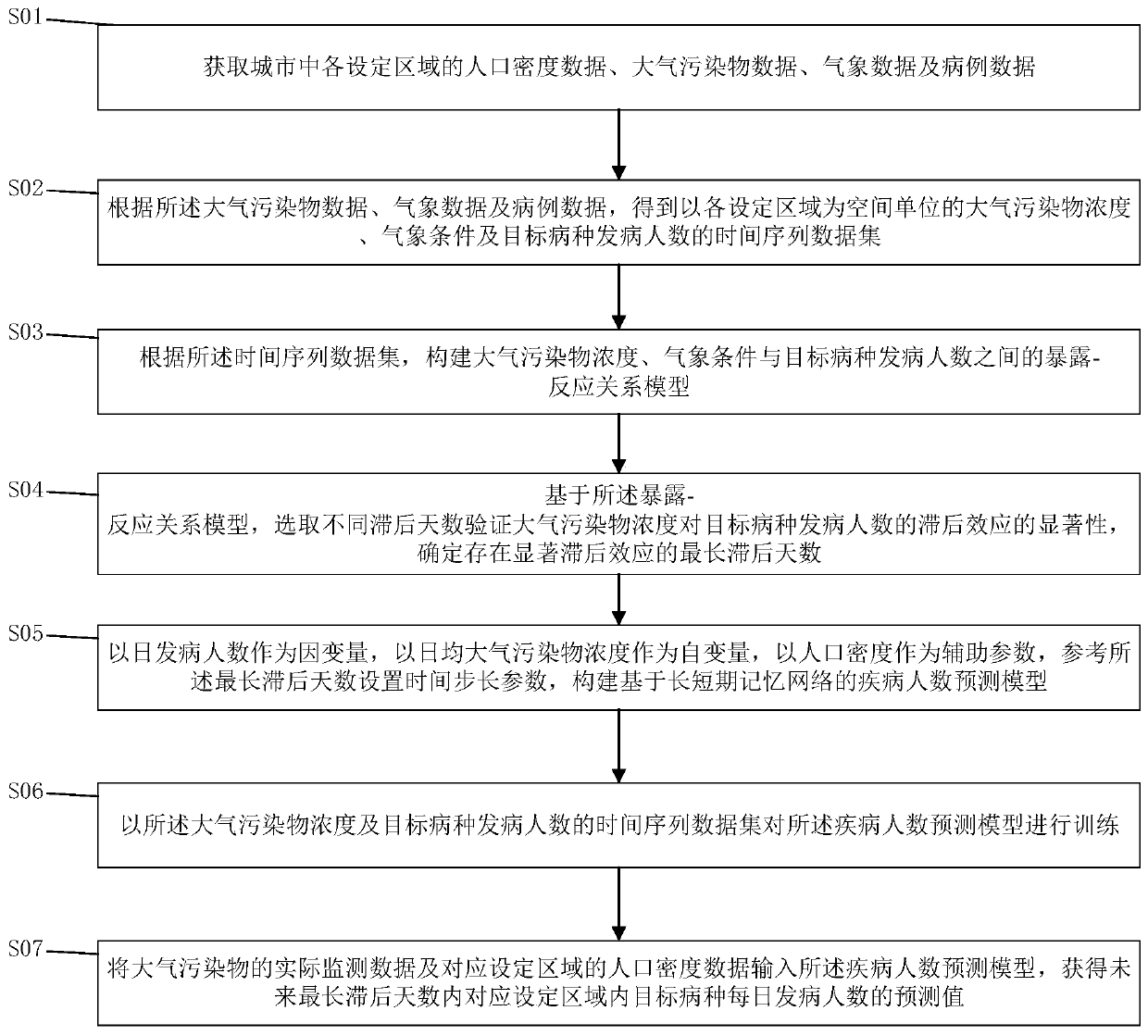Respiratory system disease patient number prediction method based on lag analysis and LSTM
A technology for respiratory diseases and prediction methods, applied in neural learning methods, epidemic warning systems, character and pattern recognition, etc., can solve the actual needs of difficult to meet business applications, and related sensitive disease prediction research is rare and low in accuracy. To ensure the rationality of the model, simplify the tuning process, and improve the prediction accuracy
- Summary
- Abstract
- Description
- Claims
- Application Information
AI Technical Summary
Problems solved by technology
Method used
Image
Examples
Embodiment Construction
[0049] In order to make the purpose, technical solution and advantages of the present application clearer, the embodiments of the present application will be further described in detail below in conjunction with the accompanying drawings.
[0050] It should be clear that the described embodiments are only some of the embodiments of the present application, rather than all of the embodiments. Based on the embodiments in the embodiments of the present application, all other embodiments obtained by persons of ordinary skill in the art without making creative efforts belong to the protection scope of the embodiments of the present application.
[0051] The terms used in the embodiments of the present application are only for the purpose of describing specific embodiments, and are not intended to limit the embodiments of the present application. The singular forms "a", "said" and "the" used in the embodiments of this application and the appended claims are also intended to include ...
PUM
 Login to View More
Login to View More Abstract
Description
Claims
Application Information
 Login to View More
Login to View More - R&D
- Intellectual Property
- Life Sciences
- Materials
- Tech Scout
- Unparalleled Data Quality
- Higher Quality Content
- 60% Fewer Hallucinations
Browse by: Latest US Patents, China's latest patents, Technical Efficacy Thesaurus, Application Domain, Technology Topic, Popular Technical Reports.
© 2025 PatSnap. All rights reserved.Legal|Privacy policy|Modern Slavery Act Transparency Statement|Sitemap|About US| Contact US: help@patsnap.com



